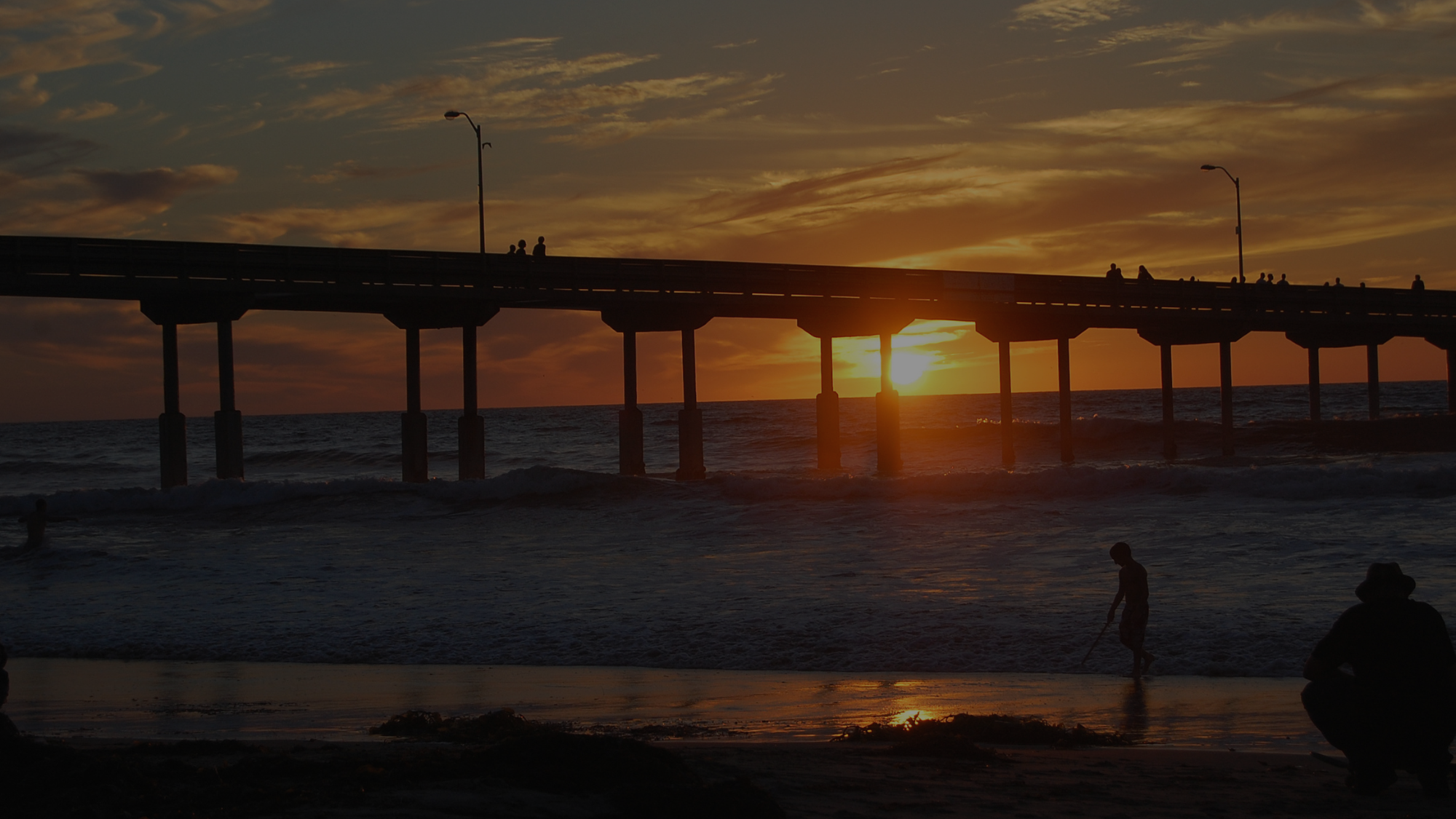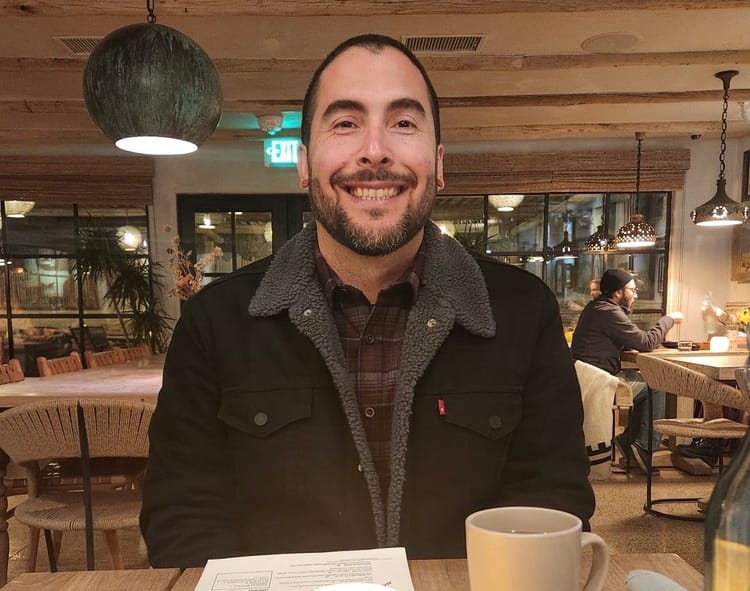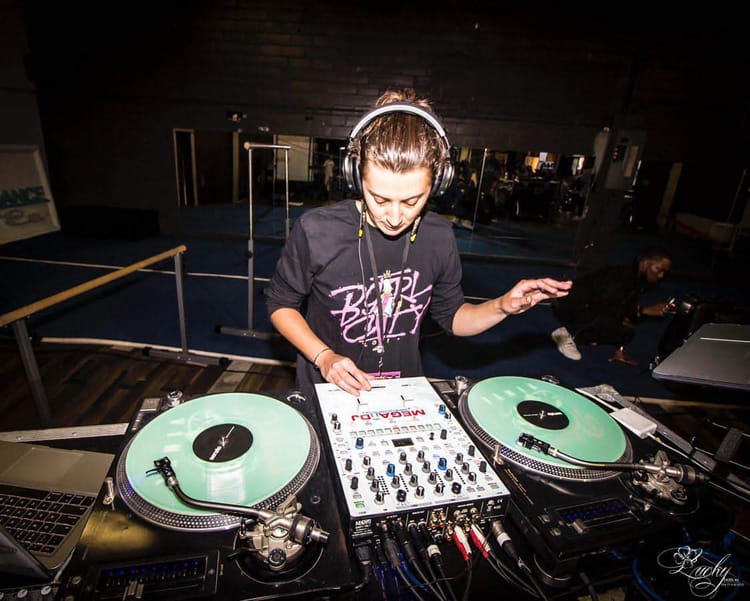Indigenous community dances, sings and serves up frybread tacos during 53rd annual SDSU powwow
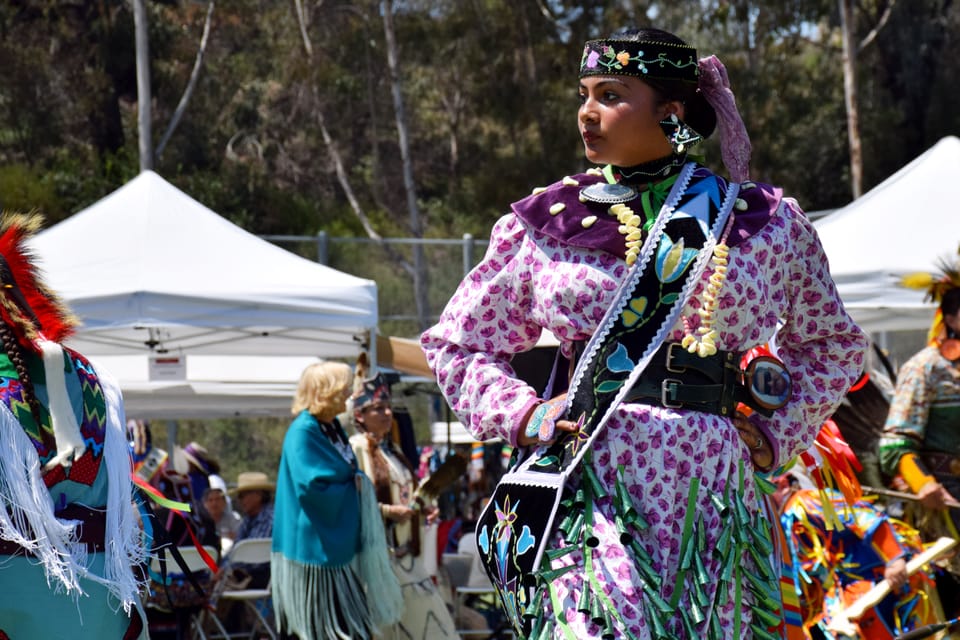
The annual event is among the longest running college-hosted powwows across the United States.
Written by Lauren J. Mapp, Edited by Kate Morrissey
Drum rhythms echoed across San Diego State University on Saturday as students, faculty and community members celebrated the campus’ 53rd annual powwow.
The event, one of the oldest university-hosted powwows across the country, was a collaborative effort among SDSU's Native Resource Center, American Indian Studies Department, Native American Student Alliance and the American Indian Alumni Chapter.
The powwow featured special dance contests, cultural displays, arts and crafts booths, food vendors making frybread tacos and informational stalls.
SDSU's annual powwow is one of the ways the campus supports Indigenous cultural expression and education. The university's ongoing initiatives, such as the Elymash Yuuchaap Indigenous Scholars and Leaders program, further support Native students throughout their academic journey.
Oneida transfer student Reine Gutierrez said that through the powwow and programs like Elymash Yuuchaap and taking American Indian studies classes, she’s learning leadership and community skills, as well as cultural traditions and etiquette.
“I feel like I've struggled in my higher education journey, and I'm learning that I think a lot of that had to do with the lack of community and feeling like I'm a part of something,” the junior foods and nutrition major said. “I feel like these events are very important in my success.”
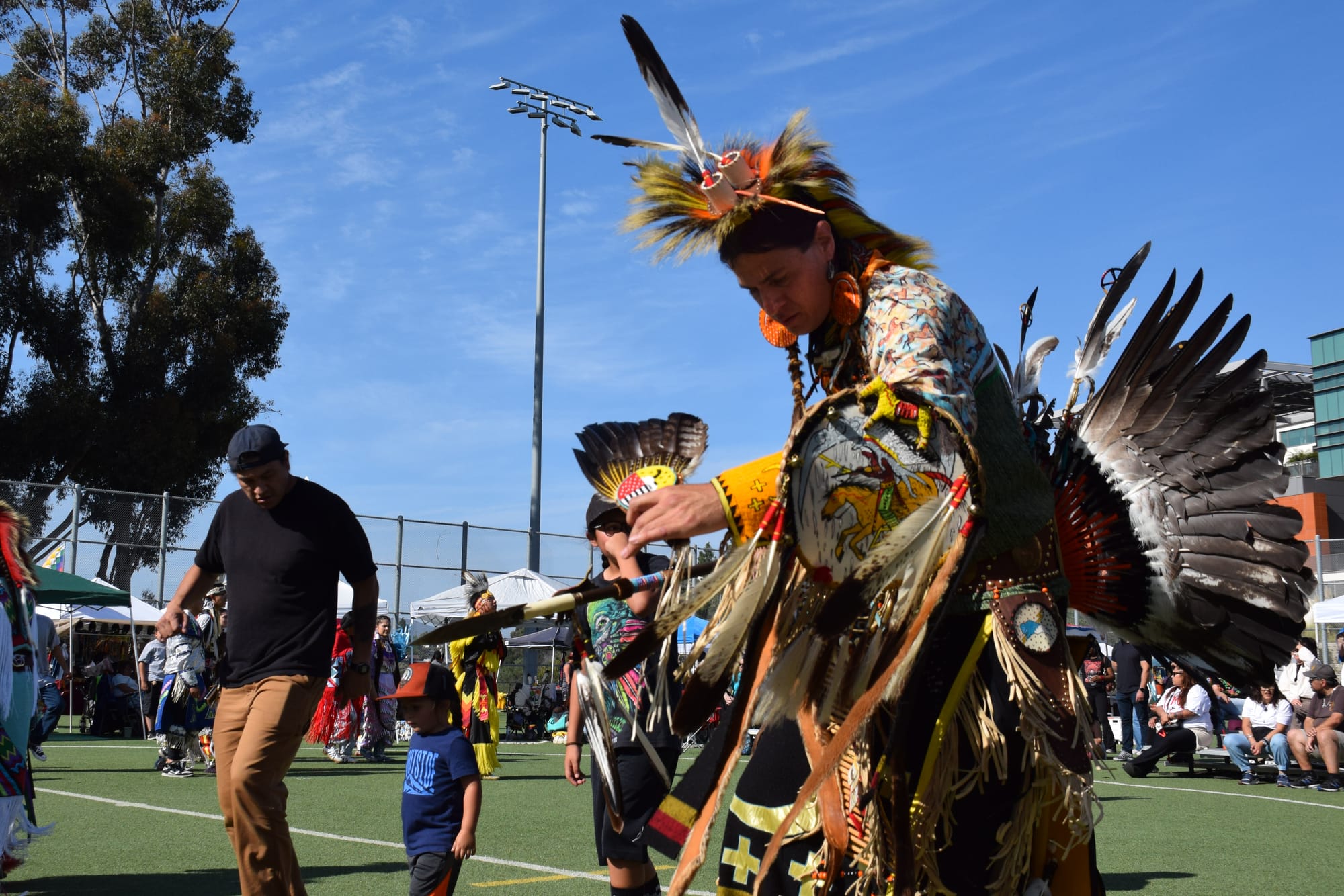
This year’s head staff was made up of head woman Chamese Dempsey (Nuumu/Paiute, Yaqui and Chippewa), head man Mi’De McKay (Kitchenuhmaykoosib Inninuwug First Nation/Big Trout Lake), head young girl Sophie Martinez (Barona Band of Mission Indians), head young boy Dominic Gates Gastelum (Pascua Yaqui and Navajo) and spiritual advisor Bobby Wallace (Barona Band of Mission Indians).
Throughout the day, powwow guests could hear emcee Richard DeCrane (Navajo and Crow) introduce drum groups and dances, while arena director Brandon Racine (Pikuni Nation/Blackfeet Nation) ensured the schedule moved along smoothly.
Head bird singer Chris Alvarado Waipuk (Ipai Kumeyaay from the village of Ahmukatlatl/San Pasqual Reservation), host northern drum Green River and host southern drum Red Warrior led music throughout the day.
Native Resource Center Director Chis Medellin said this year’s SDSU powwow was unique because of a greater emphasis on specials — or competitive dance contests — throughout the day than in years past. Dance specials throughout the day included those for side step dance style, couples dance and girls’ fancy shawl dance.
“Specials honor different parts of the community, whether that's through specific dance categories or honoring the head staff,” he said. “Head staff, a lot of times, want to give back to the community, and so they host a special in order to do that.”
SDSU alum Mark Cervantes — who graduated with his American Indian studies degree in 2017 — also hosted a dance contest with a cash prize for college students since this year’s powwow coincided with his birthday. The Penelakut First Nation tribal member called the gesture “a humble way to encourage students to continue their education.”
“I'm not going to tell them that getting an education from a colonial institution is the answer, but it does give you options, and I find as I get older, it's nice to have options,” Cervantes said. “I want to encourage (students) to continue to decolonize their thoughts and decolonize their actions by powwow dancing.”
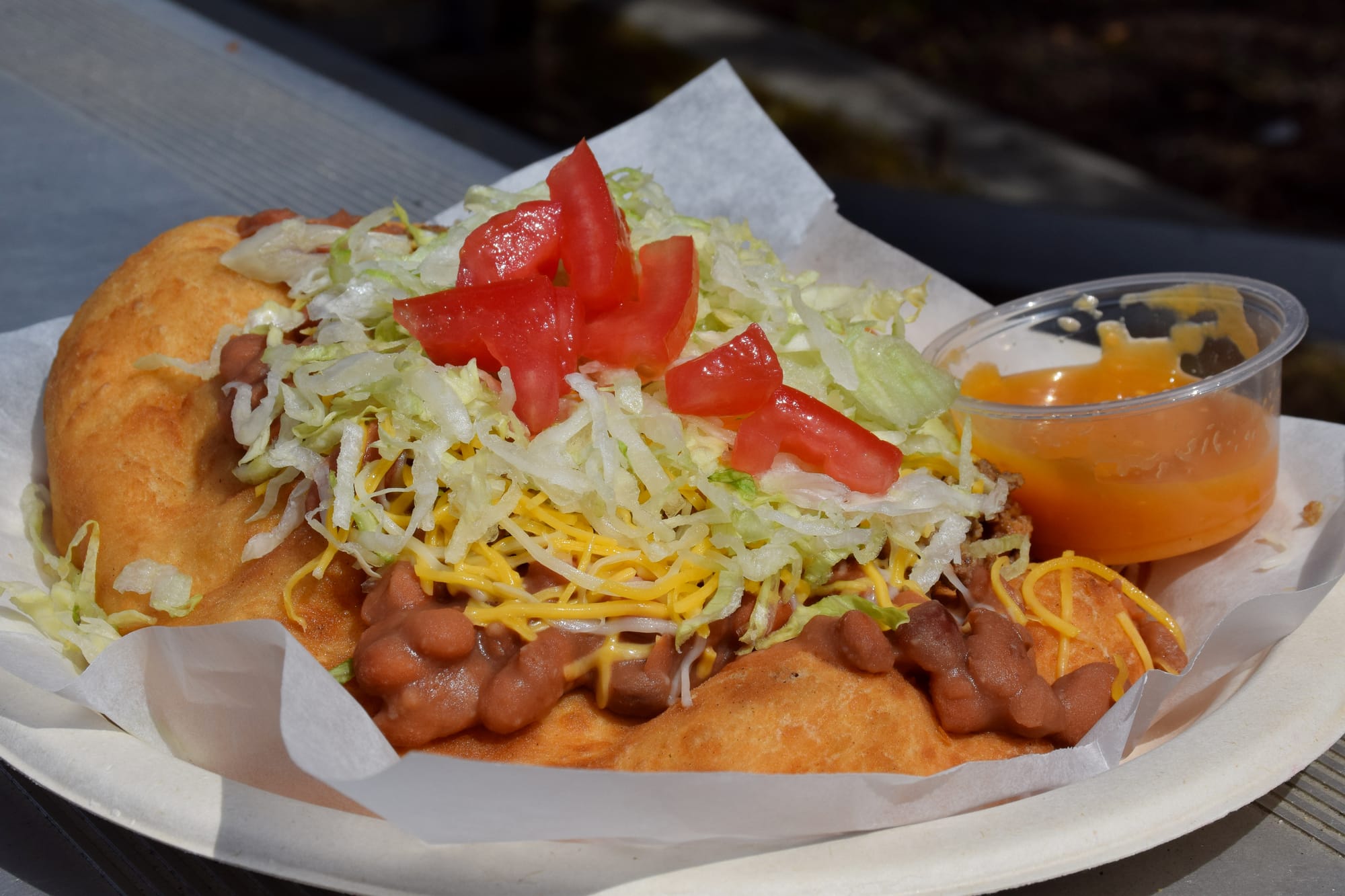
Early in the day, the bright orange and white fringe of 19-year-old Te’e Brown’s grass dance regalia swayed as he swept his feet across the arena alongside fellow grass dancers while elders offered words of wisdom as he moved in a circle honoring the four directions during the coming out ceremony that formally introduced him as a dancer.
“It's a warrior society, so it pretty much just gives me permission to be more involved in as many ways as I can,” said Brown, a member of the Pauma Band of Luiseño Indians. “Growing up, I always wanted to be initiated, so it was wonderful to have people that I know and people that I've met recently support me, and just being able to be out there with all my family.”
Although he’s currently a sophomore at the University of Oregon, which hosts its own annual powwow each May, Brown chose to have his coming out ceremony at SDSU to be near the family and community he grew up dancing with.
“It's just a wonderful, small community powwow that I enjoyed being at,” said Brown, who is double majoring in Native American and Indigenous studies and linguistics.
In addition to all the specials and intertribal dances throughout the day, the powwow also included a number of Indigenous arts and craft vendors, including Diné/Navajo Nation artist Johnnie Begay.
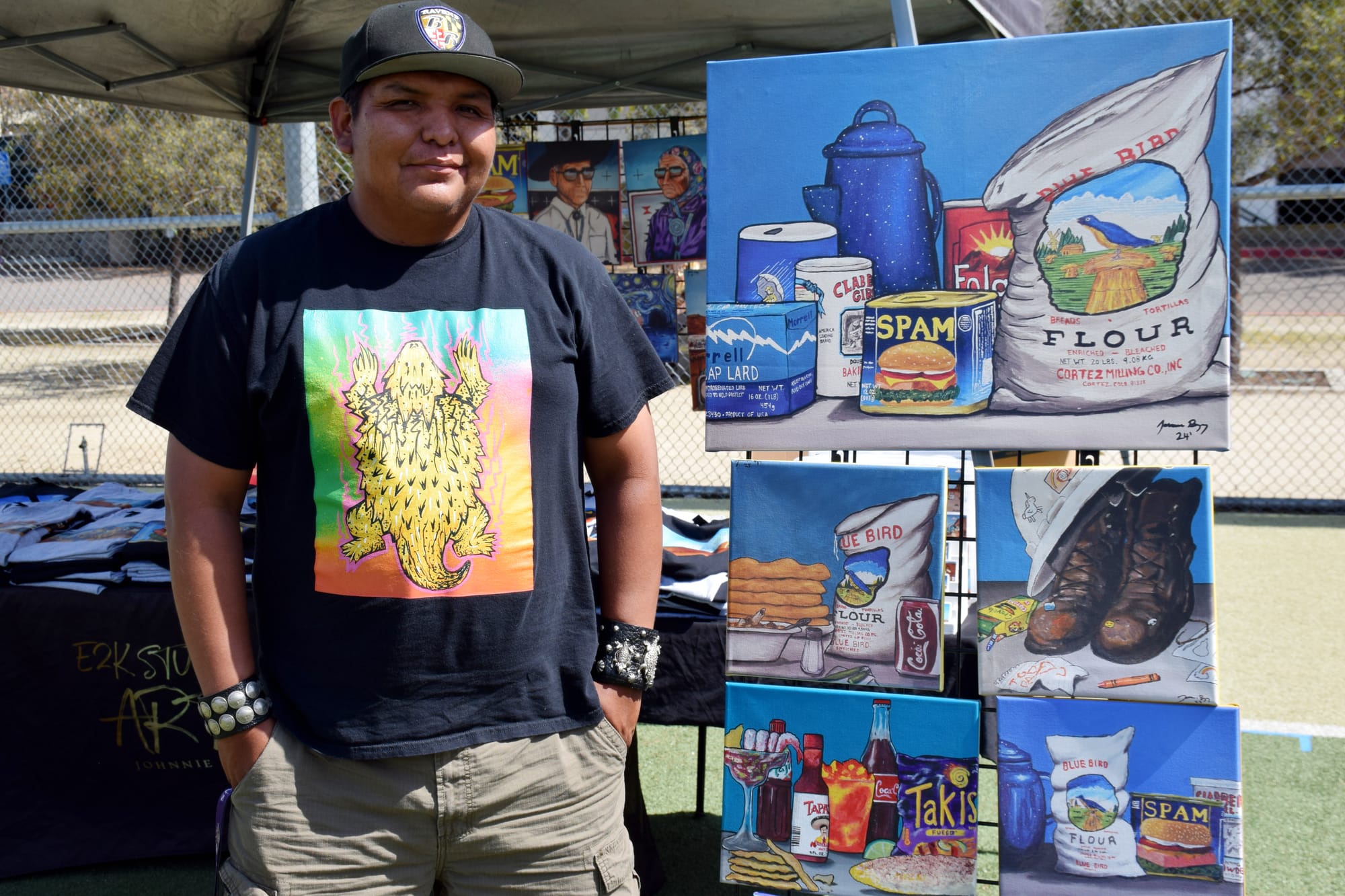
Begay’s art style blends photorealism that closely resembles high-resolution photographs with cartoon characters like Bluey and SpongeBob incorporated into the Arizona landscape where he is from.
Some of the pieces he had on display during the powwow included still art paintings of Spam, Blue Bird Flour bags, Takis and other commercial foods, detailed portraits of loved ones and stickers reimagining houses in the fictional town of Bikini Bottom as traditional Indigenous dwellings.
Regardless of the subject matter, he incorporates his community and cultural traditions into each of his designs. Begay said each painting has an in-depth storyline with each element of his still art representing a different person in his life.
“There's a person that represents the Spam, there's a person that represents the salt, there's a perfect person that represents the flour bag,” he said. “I tell these stories as I paint them, and I think that's what connects with a lot of my followers — it's just the fact that they know the backstory of it.”
Another vendor, Diné/Navajo Nation and Lakota beadwork artist Kimey Begaye, sold a variety of necklaces, earrings and other jewelry, many of which she designs to uplift social issues.
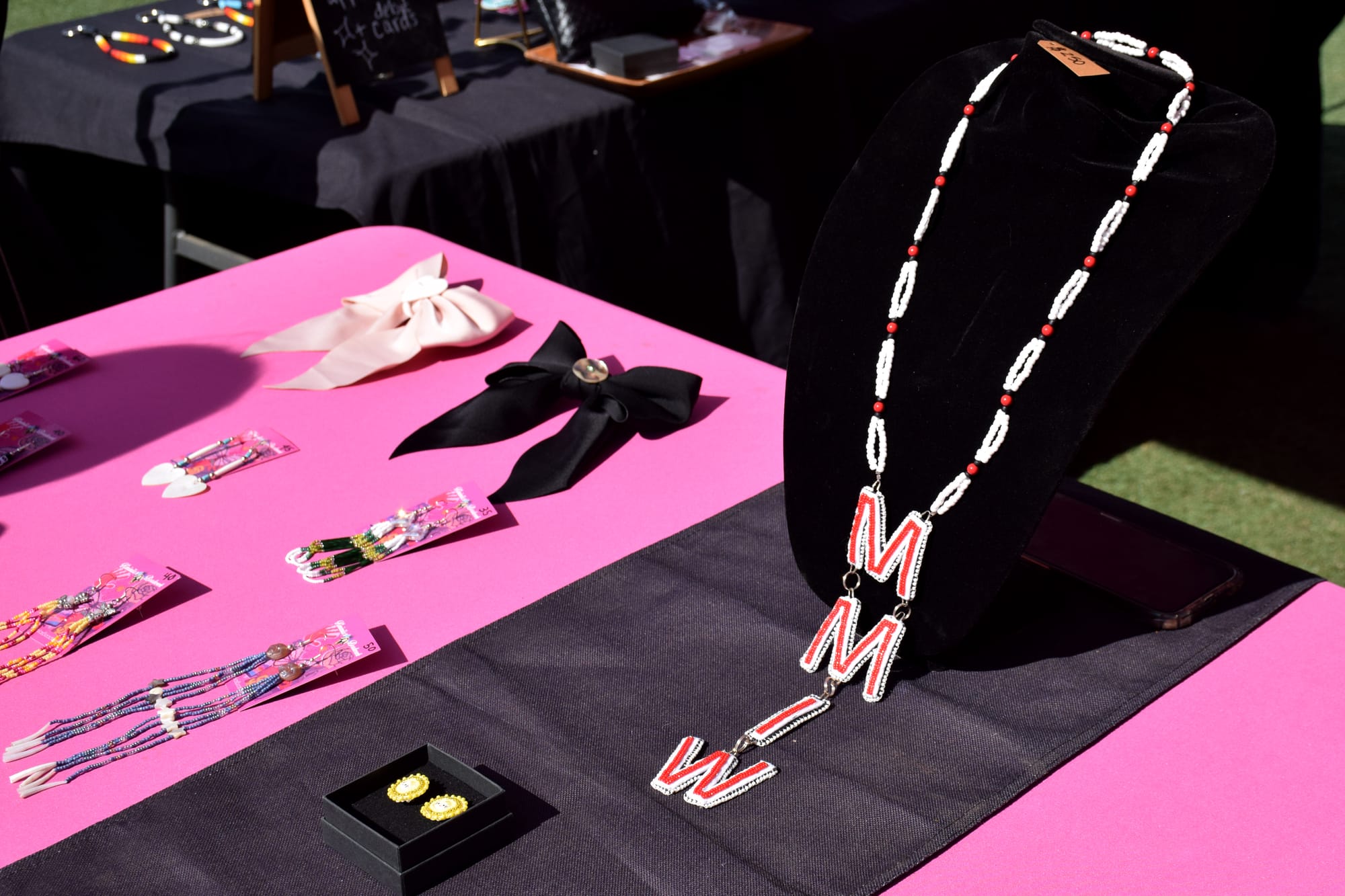
One such piece included a beaded necklace with the letters MMIW in red and white beads. The acronym stands for Missing and Murdered Indigenous Women, the movement and human rights crisis highlighting the disproportionately high rates of violence, abduction and murder experienced by Indigenous women, girls and Two-Spirit people across North America.
“I like to put a lot of storytelling in my beadwork and use a lot of vibrant colors designed to attract people to see Indigenous beadwork more, because it's not really in the main media,” Begaye said.
SDSU will host its 54th annual powwow next year on Saturday, April 11.

